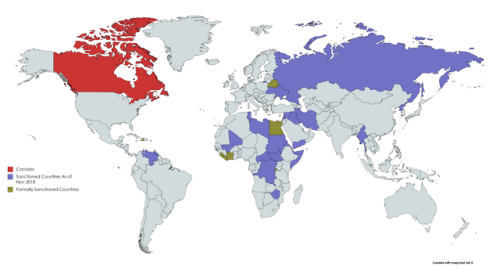Contents:


Average collection period is the number of days it takes to receive payment for goods or services. This metric determines short-term liquidity, which is how able your business is to pay its liabilities. The longer a receivable goes unpaid, the less likely you are to be able to collect from that customer. If you have difficulty collecting customer payments, it’s tough to pay employees, make loan payments, and take care of other bills. So monitoring the time frame for collecting AR allows you to maintain the cash flow necessary to cover those costs.
2022 Instructions for Form FTB 3523 Research Credit – Franchise Tax Board
2022 Instructions for Form FTB 3523 Research Credit.
Posted: Wed, 04 Jan 2023 06:02:47 GMT [source]
Harold Averkamp has worked as a university https://1investing.in/ instructor, accountant, and consultant for more than 25 years. Our goal is to deliver the most understandable and comprehensive explanations of climate and finance topics. Go a level deeper with us and investigate the potential impacts of climate change on investments like your retirement account. In other words, Light Up Electric “turned over”—i.e., converted its AR into cash—21 times during the year. End-to-end Financial Close Automation to enable day-zero close with close task and project templates, automated workflow and close task management. You can easily calculate the Average Collection Period using Formula in the template provided.
The strategic value of order-to-cash best practices
In 2020, the company’s ending accounts receivable (A/R) balance was $20k, which grew to $24k in the subsequent year. Suppose a company generated $280k and $360k in net credit sales for the fiscal years ending 2020 and 2021, respectively. More specifically, the company’s credit sales should be used, but such specific information is not usually readily available. Although cash on hand is important to every business, some rely more on their cash flow than others. This is important because a credit sale is not fully completed until the company has been paid.
Companies that offer credit must have enough cash to pay for inventory while they wait for customers to finish paying for items they already own. A company must reasonably expect when money will come in the door to manage cash flow effectively. Average account receivables are calculated by finding the simple average of the total account receivables at the start of the period and account receivables at the end of the period. Often a company accounts for its outstanding account receivables on a weekly or monthly basis and for longer periods the figures can be found in the income statements of the company. So, how does a business measure the average collection period, and what does this number mean when all is said and done?
What Accounts Receivable (AR) Are and How Businesses Use … – Investopedia
What Accounts Receivable (AR) Are and How Businesses Use ….
Posted: Sat, 01 Apr 2017 17:47:06 GMT [source]
florida income tax rate portal Improve your chances of getting paid by offering your customers access to all the information multiple payment options instantly. Debt collection services Don’t write off bad debt without trying to use a friendly collections service tailored specifically to your business. Apruve enables large enterprises to automate long-tail credit and A/R so you can stop spending 80% of your time and resources on 20% of your revenue. We partner with each of our customers to solve their unique credit, payment, and accounts receivable challenges and build the right credit solutions for your markets, customers, and goals. Businesses and organizations of all shapes, sizes, scope and industries can benefit from measuring their average collection period. The average collection period is especially important for businesses and organizations that rely on a relatively high cash flow to ensure operations.
Accounts Receivable Aging Report: Definition, Examples, How to Use
From 2020 to 2021, the average number of days needed by our hypothetical company to collect cash from credit sales declined from 26 days to 24 days, reflecting an improvement year-over-year . This is important because all figures needed to calculate the average collection period are available for public companies. This gives deeper insight into what other companies are doing and how a company’s operations compare. Companies calculate the average collection period to ensure they have enough cash on hand to meet their financial obligations.

If the number is on the high side, you could be having trouble collecting your accounts. A high average collection period ratio could indicate trouble with your cash flows. When you extend credit terms to clients, the amount they owe you becomes part of your accounts receivable balance. Performing an average collection period calculation tells you how long it takes, on average, to turn your receivables into cash. For the second formula, we need to compute the average accounts receivable per day and the average credit sales per day. Average accounts receivable per day can be calculated as average accounts receivable divided by 365 and Average credit sales per day can be calculated as average credit sales divided by 365.
What Is Bad Debt Expense? How To Calculate and Record Bad Debt (With Examples)
The articles and research support materials available on this site are educational and are not intended to be investment or tax advice. All such information is provided solely for convenience purposes only and all users thereof should be guided accordingly. Well, the first thing you should do is compare it to your credit policies. Starting with the average AR balance gives you a better snapshot of the year. If you were to simply use your ending AR balance, your results might be skewed by a particularly large or small year-end balance. Enable 95% straight-through, same day cash application and 100% savings in lockbox data capture fees with HighRadius Cash Application Solutions.
When economies go into decline, companies might have a far more difficult time meeting financial obligations because customers tend to reduce spending. Similarly, when economies experience booms, companies also tend to grow and are in a better position to pay their bills. Crucial KPMs like your average collection period can show exactly where you need to make improvements to optimize your accounts receivable and maintain a healthy cash flow. The car lot records $58,000 in cash sales and $120,000 in accounts receivable at the end of the year.
Businesses must manage their average collection period if they want to have enough cash on hand to fulfill their financial obligations. The average collection period is an accounting metric used to represent the average number of days between a credit sale date and the date when the purchaser remits payment. A company’s average collection period is indicative of the effectiveness of its AR management practices.
How Gaviti brought monday.com complete visibility to the collections process
Accounts receivable turnover ratio is calculated by dividing total net credit sales by average accounts receivable. Small businesses use a variety of financial ratios and metrics to determine whether they’re in good financial health. One such metric is your company’s average collection period formula, also known as days sales outstanding. Typically, the average accounts receivable collection period is calculated in days to collect. This figure is best calculated by dividing a yearly A/R balance by the net profits for the same period of time.
We will take a practical example to illustrate the average collection period for receivables. Clearly, it is crucial for a company to receive payment for goods or services rendered in a timely manner. It enables the company to maintain a level of liquidity, which allows it to pay for immediate expenses and to get a general idea of when it may be capable of making larger purchases. Working capital management is a strategy that requires monitoring a company’s current assets and liabilities to ensure its efficient operation. Companies prefer a lower average collection period over a higher one as it indicates that a business can efficiently collect its receivables. FIFO, LIFO, and average cost methods are accounting techniques used in managing inventory.
For example, a company that sales mostly at the beginning of the period may show none or very little payments awaiting receipt. Also, a company who sales mostly towards the end of the period may show a very high amount of receivables. Okay now let’s have a look at an example so you can see exactly how to calculate the average receivables in days. This measure is important as it highlights how the company’s accounts receivables are being managed. Let’s say that your small business recorded a year’s accounts receivable balance of $25,000.

As you might have noticed from the formula above, in order to work out your average collection period, you need to know your average accounts receivable balance. By regularly monitoring the accounts receivable collection period, businesses can spot any payment issues quickly and take action to improve the situation. If the accounts receivable collection period is more extended than expected, this could indicate that customers are not paying on time. For example, if the receivables turnover for one year is 8, then the average collection period would be 45.63 days. If the period considered is instead for 180 days with a receivables turnover of 4.29, then the average collection period would be 41.96 days. The numerator of the average collection period formula shown at the top of the page is 365 days.
- It means that your clients take a shorter period of time to pay their bills and you have less uncertainty about payment times.
- The Cash Conversion Cycle emerges as interval C→D (i.e., disbursing cash→collecting cash).
- Similarly, it can help in assessing the credit policy of the company as the average days from the credit sale to credit collection can help you know how your business is fairing.
- If the average collection period is too low, it can also be a deterrent for potential clients.
- While seeking payments and retaining customers, one can easily miss out on timings.
In the formulas provided above the first is popular among investors and requires one to determine the accounts receivable turnover. The accounts receivable turnover can be determined by dividing the total remaining sales by the average accounts receivables. The average collection period formula is simple, but it needs a few figures to make the calculation. The average collection period equation is determined by dividing the average credit sales by the net credit sales for that duration and then multiplying it by the fraction of days in that period. Additionally, a company should compare the average collection period to their standard credit terms. If we were to assume that their invoice terms were Net 30, then this might indicate a minor problem with customers paying invoices.
A company would use the ACP to ensure that they have enough cash available to meet their upcoming financial obligations. A little tuning is always needed as a lower collection period can leave some customers dissatisfied. Expecting to pay quicker might appear like a stringent rule and push them to find alternative providers. The lesser the score is, the quicker you get the money in your account and vice versa. Ideally, the score must be low for you to run your business without financial hindrances.. Tammy teaches business courses at the post-secondary and secondary level and has a master’s of business administration in finance.
On the contrary, if her result is higher than the local market, she might want to think about adjusting the terms of payment in their lease to make sure they are paid in a more timely manner. Generally, you want to keep your average collection period or DSO under 45 days; however, this number can vary by industry. The quicker you can collect and convert your accounts receivable into cash, the better. Because it represents an average, customers who pay very early or extremely late can skew your results.